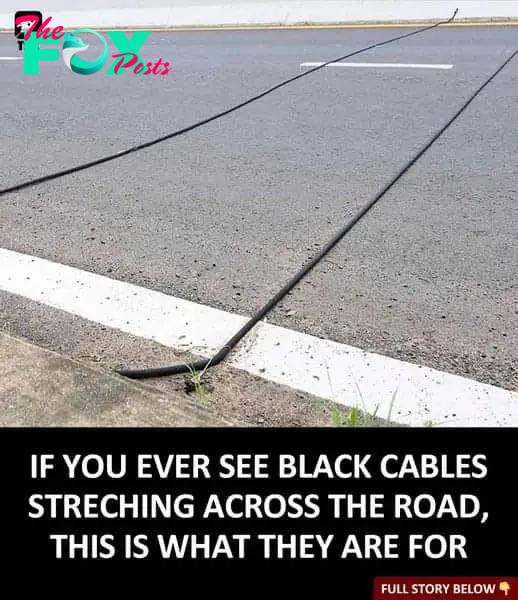Lifestyle
Florida mom gives birth to rare set of identical twins with Down syndrome

Identical twins are a miracle all by themselves. Births like this happen three or four times in 1000.
Savannah Combs, a first time mother, learned she was carrying twins. She and her husband were overjoyed by the thought of welcoming two babies.
Everything went well with the pregnancy and the couple learned they were expecting girls. However, they also learned that their identical twins both had Down Syndrome. The news came as a shock at first, but Savannah, 23, soon realized that the condition only meant that her girls would be super special. She didn’t mind they would be born with the syndrome. Of course, she was aware that there would be people who wouldn’t accept her bundles of joy, but that didn’t concern her a great deal.
“It’s very rare what they have, but they’ve been my little gems,” the proud mother told News4JAX.
Once the girls were born, Savannah and her husband Justin decided to share their journey on TikTok. The two tiny beauties, Kennadi Rue and Mckenli gained a number of followers on the social media where Savannah posted about each of the milestones they reached.
In one of the videos she shared on TikTok, Savannah revealed how doctors advised her to terminate her pregnancy because the chances of her girls to survive were slim, but she decided to give them a fighting chance. As it turned out, she did the right thing. ”Every [prenatal] appointment they were alive was a blessing to me,” Savannah explained.
They were born five weeks prematurely and had to spend some time at the NICU. Today, they are nine months old and thriving. In fact, they are just like any other baby out there.
“They’re called mono di twins, meaning that they had their own sacs, but they shared the same placenta, meaning that they were going to be identical,” Savannah explained.
“Mo di twins as it is, it’s like very rare. And then you throw Down syndrome on top of it, it’s like one in 2 million.”
“They have feelings. They have a beating heart. They know how to talk. They know how to do things you do. They will get there,” she added. “Like I said, it may be a step behind but they’re going to do it. I’ve learned these kids are feisty little things and happy little things.”
She loves showing the world that having Down Syndrome doesn’t necessarily mean the life of those people is in any way affected negatively.
“I’m going to let them know that they’re just like us and they’re going to get there as long as they put their minds to it.”
Of course, there are always those who post negative comments and judge Savannah for keeping her babies.
”I wouldn’t want those babies; if mine came out like that, they would be straight up for adoption,” one person wrote under one of the videos. However, this mother had just the right answer for the mean person. “I said, good thing they weren’t born to you and were born to me. God knew what he was doing by giving these babies to the right parents who would love them regardless,” Savannah replied.
These girls are truly happy for having a mom like Savannah who wants to raise awareness about Down Syndrome and teach the world that those who have it can lead a happy and fulfilling lives, just like her two beautiful angels.
For more on this family’s beautiful life story go to the video below.

IF YOU EVER SEE BLACK CABLES STRETCHING ACROSS THE ROAD, THIS IS WHAT YOU SHOULD DO
Unveiling the black road cables: Silent traffic observers capturing data for smarter road networks. Data-Driven Traffic Insights
As you navigate the highways and byways of your daily commute, you may have encountered an intriguing sight: black cables stretched across the road, almost like stealthy sentinels of the pavement. But what exactly are these enigmatic tubes, and what role do they play in our transportation infrastructure? The answer lies in the realm of traffic management and data collection.
These unassuming black cables are, in fact, portable traffic counters strategically placed by transportation authorities for research purposes. Primarily used by local agencies, these tubes hold vital insights into road usage and traffic patterns. With more than 12,000 of these traffic counters scattered across the state, they provide invaluable data that fuels the planning and development of our road networks.
Decoding the Mechanism Behind the Black Cables
The Technology driving these unobtrusive rubber cords is elegantly simple yet remarkably effective.2 Each time a vehicle’s tires contact the tube, a burst of air is triggered, setting off an electrical signal recorded by a counter device. This ingenious pneumatic mechanism can track the volume of vehicles passing over a road within a given timeframe. Transportation agencies can gain insights into peak traffic congestion periods by analyzing the intervals between these air bursts. When deployed in pairs, these tubes provide even richer data, enabling the determination of vehicle class, speed, and direction.
Such information is far from trivial—it forms the bedrock for informed decisions on road signage, speed limits, and allocation of transportation budgets. Based on these insights, municipalities can fine-tune their traffic management strategies, ensuring that road systems remain efficient and safe for all road users.
Road Tubes: Beyond Just Counting
While the primary function of these pneumatic road tubes is traffic counting, their utility extends far beyond mere enumeration.3 These inconspicuous instruments serve as multi-dimensional data collectors, playing a pivotal role in enhancing our road infrastructure and ensuring smooth traffic flow.
The U.S. Department of Transportation sheds light on the operational intricacies of these tubes. When a vehicle’s tires traverse the rubber tube, a burst of air pressure is generated, closing an air switch that sends an electrical signal to a counter device. These tubes can be set up either as temporary or permanent installations, each serving distinct purposes. Temporary configurations, often lasting only a day, offer quick glimpses into traffic dynamics, while permanent setups provide continuous, in-depth monitoring.
Transportation agencies strategically position these black cables in areas with minimal interference, targeting straight stretches of road for optimal data collection. Through single-tube setups, agencies can gauge vehicle counts and time gaps between vehicles. When utilizing paired tubes, the system delves into the intricacies of traffic, capturing axle count, direction, and speed.
These unassuming tubes also step in when urban road management faces challenges. If residents raise concerns about speeding or shortcutting, these tubes are deployed to investigate and validate claims. The data they generate contributes to the formulation of transportation budgets and the implementation of effective solutions.
In conclusion, the next time you encounter those mysterious black cables stretching across the road, you can appreciate the intricate web of data they weave behind the scenes. These unassuming instruments serve as silent observers, capturing the heartbeat of our roads and guiding the decisions that shape our transportation landscape. As you pass over these tubes, remember that they are more than meets the eye— they are the pulse of our evolving road networks.

-

 Lifestyle3h ago
Lifestyle3h agoBREAKING: One Direction stars gather at former member Liam Paynes funeral, and a surprise meeting between Kate Cassidy and Cheryl Cole sparks see more.cau
-

 Lifestyle3h ago
Lifestyle3h agoBREAKING NEWS: Keanu Reeves Refuses to Present Whoopi Goldbergs Lifetime Achievement Award: Shes Not a Good Person Full story.cau
-

 Lifestyle4h ago
Lifestyle4h agoOne Direction stars mourn as Liam Payne laid to rest | The Express Tribune
-

 Lifestyle4h ago
Lifestyle4h agoMescal hails Ronan's callout on women's safety | The Express Tribune
-

 Lifestyle8h ago
Lifestyle8h agoHOT NEWS: KELCE NOT HAPPY- Travis Kelce vents his anger UP over Chiefs first loss, That makes me angry..cau
-

 Lifestyle10h ago
Lifestyle10h agoBollywood hit 'Biwi No. 1' set to re-release in theatres | The Express Tribune
-

 Lifestyle10h ago
Lifestyle10h agoThe arena roars again | The Express Tribune
-

 Lifestyle14h ago
Lifestyle14h agoFans react after single Kim Kardashian hangs out with $30K Tesla robot: Low-maintenance boyfriend.cau




















